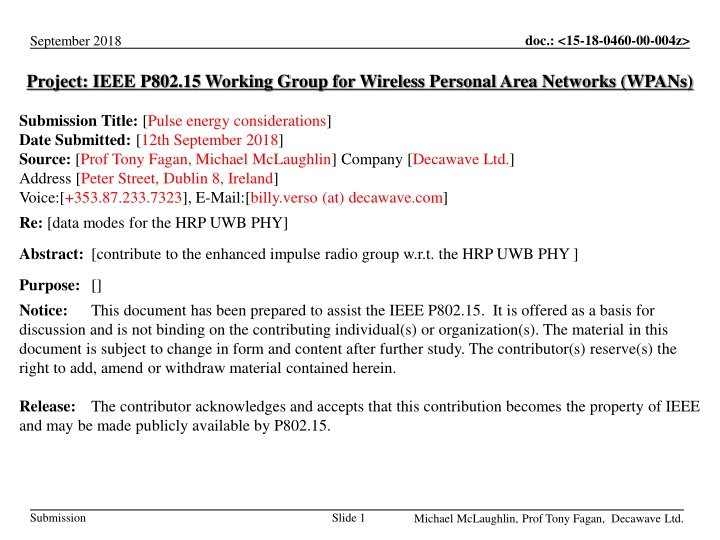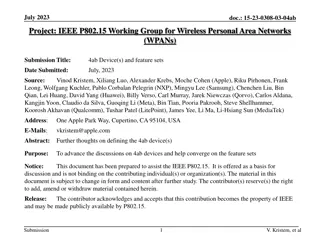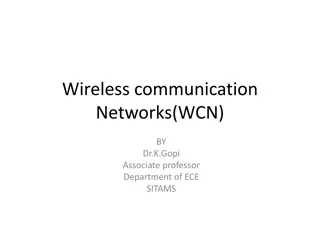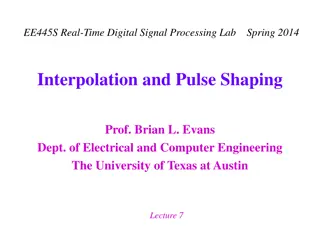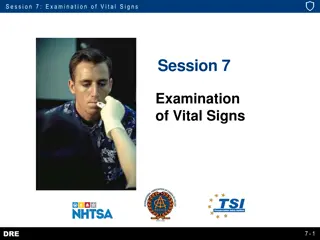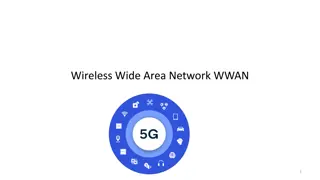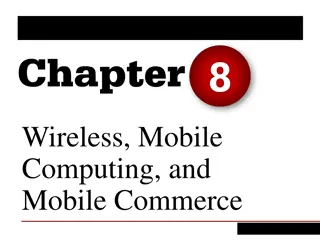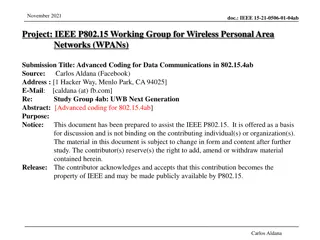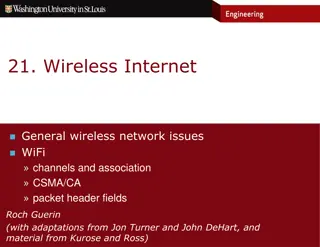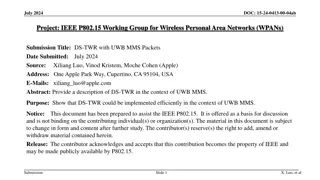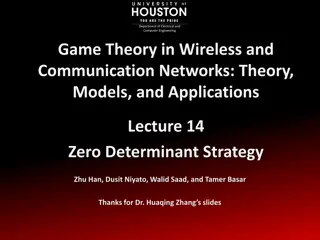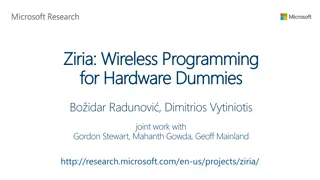Pulse Energy Considerations for Wireless Personal Area Networks
In this submission to the IEEE P802.15 Working Group, Prof. Tony Fagan and Michael McLaughlin from Decawave Ltd. discuss pulse energy considerations in the context of Wireless Personal Area Networks (WPANs). The document outlines power limitations, energy requirements per pulse, and practical design considerations for peak power. Detailed slides with energy calculations and proposed framing schemes are presented to enhance understanding of impulse radio technologies.
Download Presentation

Please find below an Image/Link to download the presentation.
The content on the website is provided AS IS for your information and personal use only. It may not be sold, licensed, or shared on other websites without obtaining consent from the author.If you encounter any issues during the download, it is possible that the publisher has removed the file from their server.
You are allowed to download the files provided on this website for personal or commercial use, subject to the condition that they are used lawfully. All files are the property of their respective owners.
The content on the website is provided AS IS for your information and personal use only. It may not be sold, licensed, or shared on other websites without obtaining consent from the author.
E N D
Presentation Transcript
doc.: <15-18-0460-00-004z> September 2018 Project: IEEE P802.15 Working Group for Wireless Personal Area Networks (WPANs) Submission Title: [Pulse energy considerations] Date Submitted: [12th September 2018] Source: [Prof Tony Fagan, Michael McLaughlin] Company [Decawave Ltd.] Address [Peter Street, Dublin 8, Ireland] Voice:[+353.87.233.7323], E-Mail:[billy.verso (at) decawave.com] Re: [data modes for the HRP UWB PHY] Abstract: [contribute to the enhanced impulse radio group w.r.t. the HRP UWB PHY ] Purpose: [] Notice: discussion and is not binding on the contributing individual(s) or organization(s). The material in this document is subject to change in form and content after further study. The contributor(s) reserve(s) the right to add, amend or withdraw material contained herein. This document has been prepared to assist the IEEE P802.15. It is offered as a basis for Release: The contributor acknowledges and accepts that this contribution becomes the property of IEEE and may be made publicly available by P802.15. Submission Slide 1 Michael McLaughlin, Prof Tony Fagan, Decawave Ltd.
2 doc.: <15-18-0460-00-004z> September 2018 Each frame is mean power limited Mean power must be < -41.3 dBm per MHz in any 1ms 500 MHz BW < 37.1 nJ of total energy in any frame shorter than 1ms A minimum length secure ranging frame must contain a minimum number of pulses At least 4096 for the cipher/STS (32 s at 128MHz PRF) At least 2000 pulses for the SHR. (SYNC+SFD). 20 s of DW proposal or 16 s of ABCN proposal At least 6096 pulses Maximum energy per pulse = 37.1nJ / 6096 = 6.1 pJ Submission Slide 2 Michael McLaughlin, Prof Tony Fagan, Decawave Ltd.
3 doc.: <15-18-0460-00-004z> September 2018 Energy of a single pulse (Truncated 15.4a Reference pulse) ??? 499.2??? ??: 2?? ?????? / ????? = 16.26??? At 0.61V peak energy is 6.06 pJ 37100/6.06 = 6122 pulses This just allows the smallest frame with No Data Smallest usable data frame has 12 bytes = 1536 pulses at 125 MHz PRF at 7.8Mbps (ABCN scheme) 4.86 pJ/pulse 0.55 Vpk Submission Slide 3 Michael McLaughlin, Prof Tony Fagan, Decawave Ltd.
4 doc.: <15-18-0460-00-004z> September 2018 Proposal All comparisons of preamble schemes use a maximum peak power of: Preamble Vpk 0.61 Volts referenced to 50 All comparisons of data modulation schemes use a maximum peak power calculated from number of pulses in smallest frame: e.g. for ABCN 7.8 Mbps proposal Data Mode Vpk 0.55 Volts referenced to 50 Submission Slide 4 Michael McLaughlin, Prof Tony Fagan, Decawave Ltd.
5 doc.: <15-18-0460-00-004z> September 2018 Practical peak power design considerations Standard CMOS in a 40 nm process can only generate the peak power equivalent of about 0.7V peak into 50 at the antenna when there are the following constraints: wide band operates up to 8.25 GHz variable output power power efficient meeting a predefined spectral transmission mask over all PVT corners up to 105 C No external RF passives External passives can provide much higher Quality Factor than on-chip Submission Slide 5 Michael McLaughlin, Prof Tony Fagan, Decawave Ltd.
6 doc.: <15-18-0460-00-004z> September 2018 Peak power considerations There are losses of 6 dB or more after the signal is generated before it reaches the antenna 8 GHz is a high frequency for standard 40 nm RF CMOS particularly production CMOS rather than research. Considerable loss in an integrated balun exaggerated by non RF process i.e. standard substrate Losses in the Tx/Rx switches exaggerated by bulk process i.e. limited device performance Losses in the tracks and package exaggerated by non RF process i.e. standard BEOL (metallisation and associated finishing) Losses in the antenna feed and the antenna itself exaggerated by low cost FR4 PCB substrates Losses higher at higher temperatures (must work to 105 C) exaggerated by low cost packages with higher thermal resistance Submission Slide 6 Michael McLaughlin, Prof Tony Fagan, Decawave Ltd.
7 doc.: <15-18-0460-00-004z> September 2018 Peak pulse power summary Difficult to get > 0.7 V with UWB design constraints No point in designing pulse generator that can go beyond 0.61V All schemes are mean limited if data is more than ~10 bytes Even with no data whatsoever, only preamble and cipher, only a 0.3 dB difference between peak limited frame and mean limited frame for both 4a 6.8 Mbps and DW proposed scheme 2 ns pulse spacing is just as good as 4 ns spacing. Extra peak amplitude possible for 4 ns pulses would break mean power limit Submission Slide 7 Michael McLaughlin, Prof Tony Fagan, Decawave Ltd.
doc.: <15-18-0460-00-004z> September 2018 12 byte frame comparison DW 13.6 Mbps mode gets same range as ABCN at 6.8 Mbps Halves the duration of the data portion DW 6.8 Mbps gets considerably greater range 2 ns pulse spacing allows 50% guard time Submission Slide 8 Michael McLaughlin, Prof Tony Fagan, Decawave Ltd.
doc.: <15-18-0460-00-004z> September 2018 40 byte frame comparison DW 13.6 Mbps mode gets same range as ABCN at 6.8 Mbps Halves the duration of the data portion DW 6.8 Mbps gets considerably greater range 2 ns pulse spacing allows 50% guard time Submission Slide 9 Michael McLaughlin, Prof Tony Fagan, Decawave Ltd.
doc.: <15-18-0460-00-004z> September 2018 Data Rates proposal We propose that 4z has 3 data modes as shown 2 ns pulse spacing 250 MHz mean PRF 50% guard time Concatenated 55/63 RS code with standard rate 1/8 K=3 convolutional code 6.8 Mbps for maximum range 27 Mbps for minimum power consumption 13.6 Mbps for range/power compromise Submission Slide 10 Michael McLaughlin, Prof Tony Fagan, Decawave Ltd.
